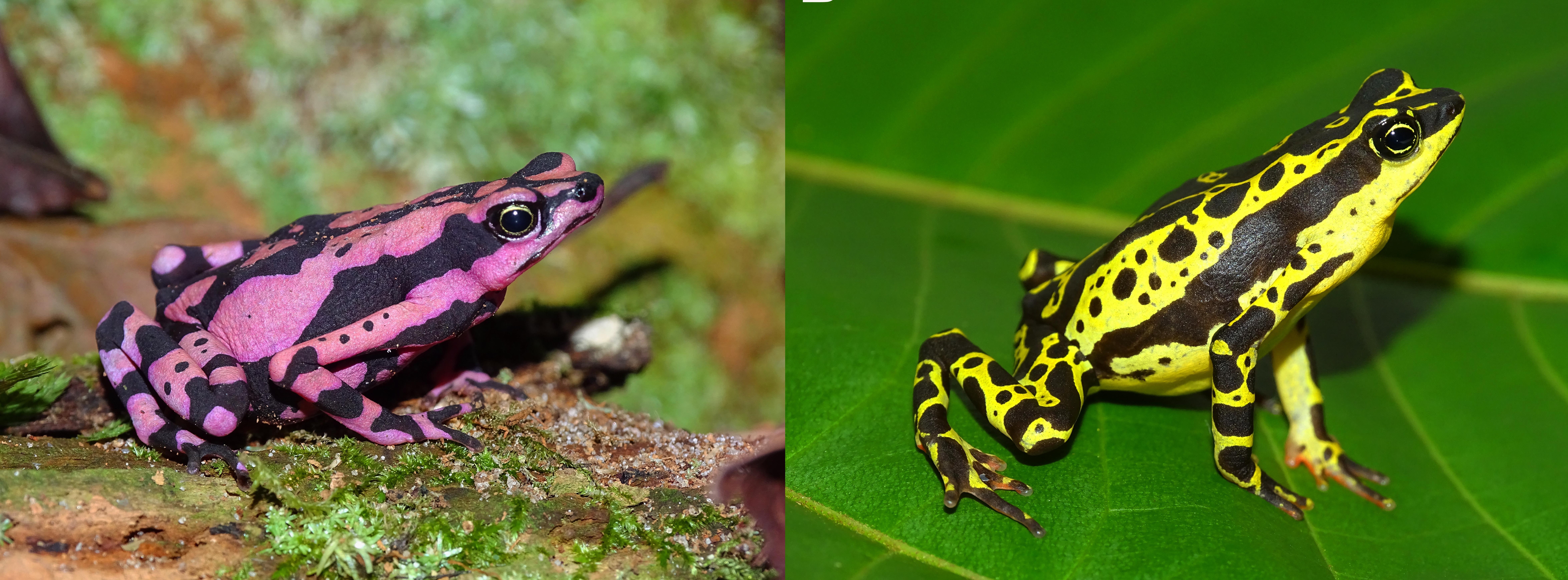On July 14, 2022, a team composed of a professor and students from the Federal University of Western Pará (UFOPA) conducted environmental education activities in the Community of Nova Betel, in Oriximiná, Pará State, Brazil. The activities were carried out at the Nova Betel Municipal Elementary School, a teaching hub in a region with several small communities, 80 km away from the town’s headquarters. According to the school teachers, approximately 200 people, including students from the 1st to the 9th grade of elementary school, as well as their families, such as mothers and fathers, participated.
Presentations were made about the amphibians and reptiles of the region and the importance of respecting and protecting these animals, as well as demystifying negative legends about them. Special focus was given to the Harlequin Toad (Atelopus hoogmoedi), a beautiful species that occurs in the region, with colors ranging from yellow to pink. After the lectures, playful and educational activities were held, such as a memory game with pictures of anurans of the region, an origami frog-shaped workshop, a board game about anurans and drawings for the children to color. The community’s participation and engagement were amazing, with a very positive feedback. Many people said they had seen the Harlequin Toad, and were happy to learn more about the species. This community was chosen to start this environmental education project because the Harlequin Toad has already been recorded in the region where it is located. In addition, the increase in deforestation in this area raises concerns about the future of these toads and other native species.

Harlequin Toads, also known as Atelopus, are considered the jewels of the Neotropics and are among the most amazing and colorful amphibians on Earth. Vibrant and diverse, they adorn the forests and watersheds of South and Central America with the colors of the rainbow and are of great cultural value to many communities. However, they are also some of the most threatened species on the planet. In the Brazilian Amazon, the Harlequin Toads can be found near the streams, indicating that the waters are clear and clean. When the waters of the streams are polluted and dirty, or when the forest is cut down, these beautiful little frogs disappear, indicating that nature is being destroyed.
Unfortunately, because of environmental destruction, this beautiful and unique group of amphibians is disappearing. To prevent this from happening, people and organizations around the world have come together to form the Atelopus Survival Initiative (ASI) with one goal: to save harlequin frogs from extinction. To learn more about ASI, visit the website.

In Brazil, ASI is constituted by researchers and conservationists from UFOPA, the National Institute for Amazonian Research (INPA), the Federal University of Pará (UFPA), the Federal University of Amazonas (UFAM), the Federal University of Amapá (UNIFAP), the Paulista Reserve – São Paulo Zoo, and the National Center for Research and Conservation of Reptiles and Amphibians (RAN) of the Chico Mendes Institute for Biodiversity Conservation (ICMBio).
The environmental education activities in Oriximiná were led by Prof. Dr. Samuel Gomides, member of the Atelopus Survival Initiative, along with undergraduate students Ediego de Sousa Batista, Jorge Emanuel Cordeiro Rocha, Jaíne da Silva Franco and Christian Narciso Silva.

Photos by Ediego de Sousa Batista (community activities) and Samuel Gomides (Atelopus hoogmoedi, Harlequin Toad)
Read the Portuguese version of this text here. See below educational material about the Harlequin Toad created by Ediego de Sousa Batista. Feel free to download it.


